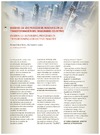Identificador persistente para citar o vincular este elemento:
https://accedacris.ulpgc.es/jspui/handle/10553/55486
| Campo DC | Valor | idioma |
|---|---|---|
| dc.contributor.author | Solana Suárez, Enrique | en_US |
| dc.contributor.author | Gutiérrez Labory, Elsa María | en_US |
| dc.date.accessioned | 2019-05-23T14:09:53Z | - |
| dc.date.available | 2019-05-23T14:09:53Z | - |
| dc.date.issued | 2019 | en_US |
| dc.identifier.issn | 1133-6137 | en_US |
| dc.identifier.uri | https://accedacris.ulpgc.es/handle/10553/55486 | - |
| dc.description.abstract | The use of rendering to simulate reality and transform architectural imagery is the subject that we intend to discuss in the context of change in the graphic paradigm of current architectural representation. We use a play on words; BIOS, Basic Input / Output System, and marry up the acronym of a well-known operating system (OS), version 3 (3.0) which follows the two previous versions (1.0 and 2.0), with the phonetic “DesBIOS”, bringing the word “desvío” (diversion, in Spanish), which means a change of path, or route, which is the result. There has been a shift in the use of rendering to construct a chain of transformation, which has gone through the different versions explained below: DesBIOS 1.0. IMITATION Digital rendering operations to simulate materials. DesBIOS 2.0. FABRICATION Rendering sparks the production of new materials of digital appearance. DesBIOS 3.0. SPATIALITY The use of elements of digital appearance transforms the spatial image into a digital appearance. The industry accepts such changes, propitiating the creation of new materials by the construction industry through architectural design, thus progressing towards obtaining appearances that emulate digital representation in the configuration and construction of spaces. | en_US |
| dc.description.abstract | La utilización del render como simulador de realidad y transformador del imaginario arquitectónico es el asunto que pretendemos desarrollar en el contexto del cambio de paradigma gráfico de la representación arquitectónica actual. Jugamos con las palabras, la BIOS, Basic Input / Output System (Sistema Básico de entrada y salida), y conjugamos el acrónimo del nombre de un conocido sistema operativo (OS), que definimos en su versión tercera (3.0) existiendo dos versiones anteriores (1.0 y 2.0). La fonética DesBIOS acerca la palabra “desvío” que significa un cambio de vía, de ruta, que es lo producido. Ha existido un desplazamiento del uso del render, construyendo un encadenado de transformación, esto constituye las diferentes versiones que pasamos a explicar: DesBIOS 1.0. IMITACIÓN Operaciones digitales de render para producir simulación de materiales. DesBIOS 2.0. FABRICACIÓN Render desencadena producción de nuevos materiales de apariencia digital. DesBIOS 3.0. ESPACIALIDAD La utilización de elementos con apariencia digital, transforma la imagen espacial en aspecto digital. El sector profesional asume tales cambios, propiciando la creación de nuevos materiales por la industria de la construcción a través del diseño arquitectónico, avanzando así hacia la obtención de apariencias emuladoras de la representación digital en la configuración la construcción de los espacios. | en_US |
| dc.language | spa | en_US |
| dc.relation.ispartof | EGA Revista de expresión gráfica arquitectónica | en_US |
| dc.source | EGA Revista de expresión gráfica arquitectónica [ISSN 1133-6137], v. 24 (35), p. 160-167 | en_US |
| dc.subject | 620101 Diseño arquitectónico | en_US |
| dc.subject.other | Rendering | en_US |
| dc.subject.other | Infografía | en_US |
| dc.subject.other | Representación | en_US |
| dc.subject.other | Computer graphics | en_US |
| dc.subject.other | Representation | en_US |
| dc.title | Desbios 3.0. Los proceso de rendering en la transformación del imaginario colectivo | en_US |
| dc.title.alternative | Desbios 3.0. Rendering processes in transforming collective imagery | en_US |
| dc.type | info:eu-repo/semantics/article | en_US |
| dc.type | Article | en_US |
| dc.identifier.doi | 10.4995/ega.2019.11550 | en_US |
| dc.identifier.scopus | 2-s2.0-85065587305 | - |
| dc.contributor.orcid | #NODATA# | - |
| dc.contributor.orcid | #NODATA# | - |
| dc.description.lastpage | 167 | en_US |
| dc.identifier.issue | 35 | - |
| dc.description.firstpage | 160 | en_US |
| dc.relation.volume | 24 | en_US |
| dc.investigacion | Ingeniería y Arquitectura | en_US |
| dc.type2 | Artículo | en_US |
| dc.identifier.ulpgc | Sí | es |
| dc.description.sjr | 0,148 | |
| dc.description.sjrq | Q1 | |
| dc.description.ahci | AHCI | |
| dc.description.fecytq | Q1 | |
| dc.description.fecytpuntuacion | 72,03 | |
| dc.description.dialnetimpact | 0,0 | |
| dc.description.dialnetq | Q1 | |
| dc.description.erihplus | ERIH PLUS | |
| dc.description.riba | RIBA | |
| dc.description.avery | AVERY | |
| item.fulltext | Con texto completo | - |
| item.grantfulltext | open | - |
| crisitem.author.dept | GIR IDeTIC: División de Fotónica y Comunicaciones | - |
| crisitem.author.dept | IU para el Desarrollo Tecnológico y la Innovación en Comunicaciones (IDeTIC) | - |
| crisitem.author.dept | Departamento de Expresión Gráfica y Proyectos Arquitectónicos | - |
| crisitem.author.dept | GIR IDeTIC: División de Fotónica y Comunicaciones | - |
| crisitem.author.dept | IU para el Desarrollo Tecnológico y la Innovación en Comunicaciones (IDeTIC) | - |
| crisitem.author.dept | Departamento de Expresión Gráfica y Proyectos Arquitectónicos | - |
| crisitem.author.orcid | 0000-0002-5187-9284 | - |
| crisitem.author.orcid | 0000-0001-8623-6767 | - |
| crisitem.author.parentorg | IU para el Desarrollo Tecnológico y la Innovación en Comunicaciones (IDeTIC) | - |
| crisitem.author.parentorg | IU para el Desarrollo Tecnológico y la Innovación en Comunicaciones (IDeTIC) | - |
| crisitem.author.fullName | Solana Suárez, Enrique | - |
| crisitem.author.fullName | Gutiérrez Labory, Elsa María | - |
| Colección: | Artículos | |
Visitas
312
actualizado el 15-ene-2026
Descargas
158
actualizado el 15-ene-2026
Google ScholarTM
Verifica
Altmetric
Comparte
Exporta metadatos
Los elementos en ULPGC accedaCRIS están protegidos por derechos de autor con todos los derechos reservados, a menos que se indique lo contrario.
